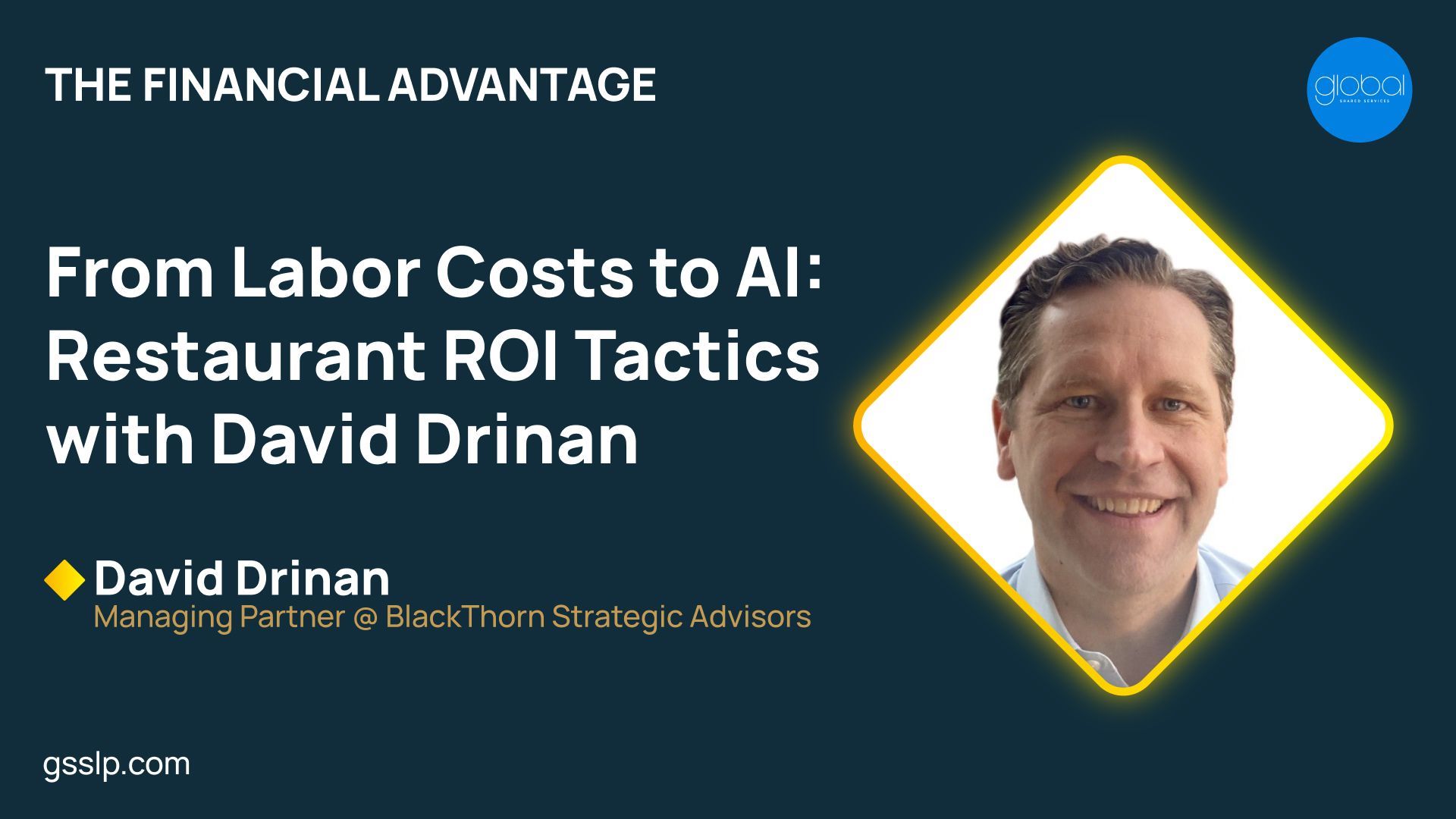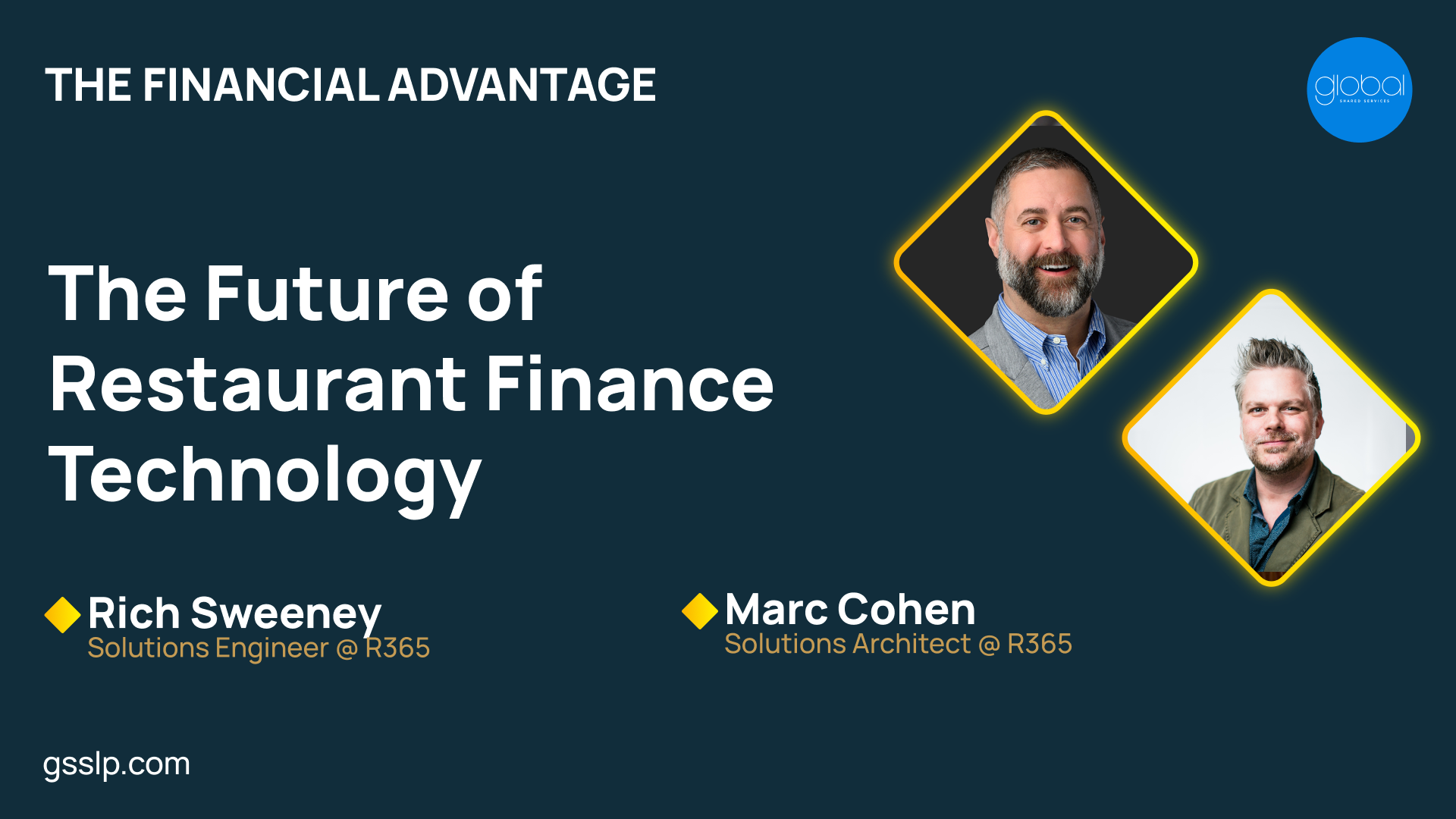From Labor Costs to AI: Restaurant ROI Tactics
David Drinan
Episode summary
In this episode of The Financial Advantage, host Nick Stauff sits down with David Drinan, Managing Partner at BlackThorne Strategic Advisors, to explore how restaurants can unlock value through operational efficiency and smart tech investments.
David shares firsthand insights from years in restructuring, private equity, and hospitality consulting. He shows how underperforming restaurants can improve profitability by focusing on labor efficiency, purchasing strategy, and automation—without relying solely on top-line growth. From dynamic scheduling tools to voice AI and fully autonomous kitchens, David outlines the tech reshaping the industry.
They also discuss how brand values and customer expectations can clash with innovation, and why striking the right balance is key. Whether you run five locations or fifty, this episode offers practical takeaways to improve unit economics and scale more confidently.
Guest-at-a-Glance

David Drinan
Managing Partner
BlackThorne Strategic Advisors
Specializes in restaurant turnarounds, growth strategies, and hospitality tech investments.
Episode Highlights

When Outside Pressure Drives Inside Improvements
Timestamp: ~00:03:30
David explains how activist investors can act as catalysts for operational change in restaurant brands. These investors often secure board seats and push leadership teams to explore cost reduction strategies. David's team and others were brought in to address inefficiencies through sourcing and labor optimization—not just top-line strategies. What's striking is that many of these cost-saving moves were possible without any reliance on technology at the time. The story highlights how investor influence, paired with operational support, can lead to substantial margin improvements without complex innovation. For operators under pressure, this demonstrates that strategic partnerships—whether driven by investment or need—can unlock immediate financial gains by targeting cost centers that often go unexamined.
"One of those [investor actions] was introducing me and my team, along with a couple of our competitors, and asking management to select someone who could go after costs. So we went after costs across the board—every cost you can imagine in a restaurant business. We used two major tools: strategic sourcing and labor efficiency."

Building Restaurant Brands That Scale
Timestamp: ~00:12:00
The discussion shifts to what separates scalable restaurant concepts from one-off successes. David points out that consistency—not novelty—is what builds trust with customers and value for investors. He uses Chick-fil-A as a benchmark, emphasizing the importance of consistent food quality, customer service, and operational control across locations. Restaurants that offer a reliable experience reduce variability and make it easier to scale without eroding brand equity. From cost structures to service models, operational repeatability helps determine how fast and how profitably a restaurant can grow. For brands eyeing growth or franchising, this segment offers a sharp reminder: what works once won't always work 20 times unless you've systematized it.
"People come into a restaurant for an experience. If they're not getting that experience—or if it's different at every location—that diminishes the value of the business and the brand, because people aren't going to come back as often."

What Happens When the Kitchen Has No Staff
Timestamp: [00:10:00]
Nick and David explore the emergence of fully autonomous restaurants, citing Donatos Pizza's robotic pizza unit at the Columbus airport. David shares why this model isn't just a novelty—it's a high-margin, operationally streamlined model that could reshape restaurant economics. He compares the startup cost of a robotic unit ($350,000) with traditional build-outs, noting the long-term labor savings and margin potential. While there's no human touchpoint, the product quality remains consistent—sometimes better than manual execution. The example helps listeners understand how automation can deliver both consistency and cost-efficiency at scale. This section is ideal for operators curious about what automation actually looks like in the wild—and how customers are reacting.
"So when they see a robotic pizza-dispensing machine, they're like, Wow, what is that? That's Donatos. ‘I gotta check that out. Is it as good as my Donatos?' And it is—it's executed to perfection, consistently. You may not get a smile necessarily, but what you do get is that fresh, hot pizza right there. It's right out of the oven—a little too hot to eat. You want to let it cool down a little bit. But that's bringing smiles to people who love that brand and that food."

Tech Adoption Is Not a One-Size-Fits-All Decision
Timestamp: ~00:44:00
As the episode nears its close, David and Nick discuss the practical challenges of adopting new tech. They talk about the real-world risk for operators who fear making the wrong tech decision, especially when juggling day-to-day operations. David emphasizes that innovation must be tied to current priorities—what moves the needle today, whether that's inventory, labor, or marketing. He walks through how different market conditions (e.g., inflation, hiring shortages) have shaped tech priorities over time. The takeaway is clear: technology should meet a need, not just a trend. Operators don't need to chase everything at once—but they do need a framework for choosing the right next step.
"You want to have a discipline that says, 'Okay, if you go back in time—COVID hit, and everybody had to implement digital ordering technology'. They didn't have a choice. The only way you will sell any food is if you sell it online. [... ] Then, suddenly, people were dealing with inflation. 'What should I be doing on inventory management and reducing waste? What should I be doing to purchase better?' That technology was really important at the time. Then labor—it was hard to find anybody who wanted to work in a restaurant after everybody was laid off during COVID."
You might also like
Subscribe to our newsletter
Get updates on the latest news across all
core inventory-related processes.






